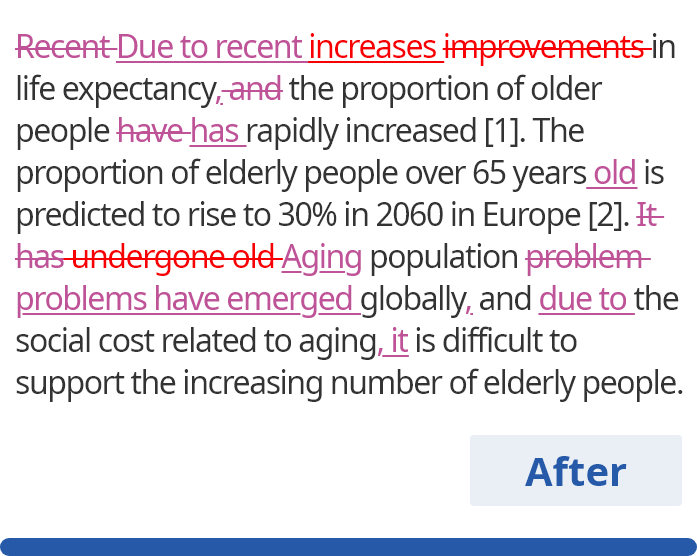Semicolons (;)
The semicolon is a punctuation mark that is most often used to connect two independent clauses that share a logical connection. It differs from a period in that its purpose is to emphasize the connection between the two clauses. Semicolons can also be used to list items in lists that are difficult to follow due to the items’ lengths or internal punctuation. This easy-to-understand guide will explain when and how to use semicolons in your writing.
Table of Contents
When to Use Semicolons
| Incorrect | Correct | |
|---|---|---|
| To connect two independent clauses |
The dress is for my mother, who is sitting over there. |
The dress is for my mother; who is sitting over there. |
| To list items with long phrases. |
I am taking my mother to the beach; a French restaurant; and a dessert café. |
I am taking my mother to the beach to see the sunset; a French restaurant, which my sister-in-law recommended; and a dessert café to drink coffee and eat canelés. |
How to Use Semicolons in Your Writing
Connecting Clauses
The most common use of the semicolon is to connect two independent clauses. Using a semicolon rather than a period helps emphasize that the two clauses are closely linked in thought.
Independent Clauses vs Dependent Clauses
An independent clause is a clause that can function as a full sentence.
- The dress is green with white flowers.
- Audrey bought the dress for eighty-nine dollars.
- The shop is closing soon.
In contrast, a dependent clause cannot function as a full sentence.
- which has white flowers
- even though it was expensive
- because it is late
Using a Semicolon to Connect Two Independent Clauses
See the following two independent clauses:
- (a)
- It is almost 10 pm.
- (b)
- The shops will be closing soon.
- (a) + (b) =
- It is almost 10 pm; the shops will be closing soon.
Here, clauses (a) and (b) are both independent. They are also logically linked. The combined sentence implies that the shops will be closing soon because it is almost 10 pm.
Using a semicolon would not be recommended for two independent clauses that have no logical connection.
- (a)
- The shops will be closing soon.
- (b)
- I had fried chicken for dinner.
Here, (a) and (b) are not closely related. Therefore, it would be best to simply separate them with a period.
Listing Items
Semicolons are also used to list items that are long, complex, or involve internal punctuation.
- Example
- Lana is driving to LA to see her niece, who loves Barbie dolls; her best friend, who works at a music production company; and a former co-worker, who has recently started a new business.
Each of these items – “her niece, who loves Barbie dolls,” “her best friend, who works at a music production company,” and “a former co-worker, who has recently started a new business” – are long and involve internal punctuation. Using commas for this list would make the sentence difficult to follow.
Commas vs Semicolons
It is best to use commas when the items being listed are either single words or simple phrases.
- Example
- For her birthday, Lana received a gold locket, a red scarf, and an iPad.
However, when the items are longer and more complex (i.e., the items are independent clauses or involve internal punctuation), it is best to use semicolons to list them.
- Example
- For her birthday, Lana received a gold locket with an ornate inlay; a red scarf, which she wore immediately; and a first-generation iPad to play her music.
Common Semicolon Mistakes
Many people are unfamiliar with semicolons and thus often use them incorrectly. Note that semicolons should be used only to separate two independent clauses or to list complex items.
To connect an independent clause and a dependent clause
First and foremost, a semicolon should not be confused with a comma. Commas are often used to connect a dependent clause to an independent clause; a semicolon cannot be used for the purpose.
- Incorrect
- Lana bought the dress; which is green with white flowers.
- Correct
- Lana bought the dress, which is green with white flowers.
To separate an introductory phrase from the main sentence
Another common mistake is using a semicolon to separate an introductory phrase from the main body of a sentence. An introductory word or phrase should be separated from the main sentence but by a comma, not a semicolon.
- Incorrect
- On Wednesday evenings; Lana babysits her two-year-old nephew.
- Correct
- On Wednesday evenings, Lana babysits her two-year-old nephew.












